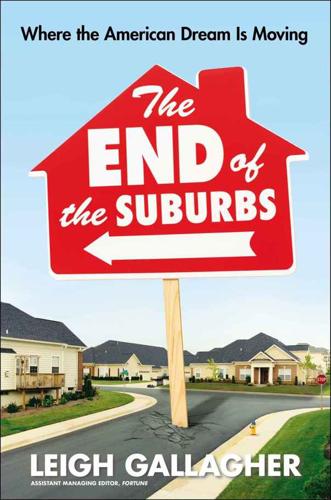
The End of the Suburbs: Where the American Dream Is Moving
by
Leigh Gallagher
Published 26 Jun 2013
And fewer people are having kids: families with children used to make up more than half of U.S. households, but by 2025 they’ll represent just a quarter, and, strikingly, we’ll have as many single-person households as families. The suburbs are built for life with kids, and we’re not having nearly as many of them. There are a variety of reasons for this that we’ll explore later, but the implication is the same: “The whole Ozzie and Harriet day has passed,” says Peter Calthorpe, the San Francisco–based architect and urban planner who pioneered the notion of transit-oriented development and who, as a cofounder of the New Urbanism movement, is one of the leading thinkers on alternative growth models to conventional suburban development. Millennials hate the burbs . . .
…
In 1993 they organized under the name the “Congress for the New Urbanism,” with the goal of promoting the design and building of traditional neighborhoods that were small and walkable, mixed stores and housing together, and emphasized community. Their early leaders included the San Francisco urbanist and architect Peter Calthorpe and the Miami-based husband-and-wife architect team of Andres Duany and Elizabeth Plater-Zyberk. Over the years their leagues expanded to include hundreds, among them the author James Howard Kunstler, whose The Geography of Nowhere spoke of the “immersive ugliness of our everyday environment” and the “despair” that environment was generating among the young, and who has called suburbia “the greatest misallocation of resources in the history of the world.”
…
The Congress for the New Urbanism officially describes itself as “the leading organization promoting walkable, neighborhood-based development as an antidote to formless sprawl.” Organized in the early 1990s, the movement traces its roots to a group of influential designers who had become alarmed by the growth of conventional suburban development and started meeting informally to share their ideas for solutions to it. They included Peter Calthorpe, a pioneer of transit-oriented, walkable residential development, and Andres Duany and Elizabeth Plater-Zyberk, the husband-and-wife team who had risen to fame by pioneering Miami modernist architecture in the 1980s before shifting gears to focus on more traditional neighborhood development. These thinkers, along with several other founding members, believed there was a better way to build not just the suburbs but our entire environment, and they were looking to formalize principles they had begun to use in their residential work—mixed-use zoning, pedestrian-friendly village development, more robust public transit, and the incorporation of the kinds of urban design methods that were common before World War II.

Whole Earth: The Many Lives of Stewart Brand
by
John Markoff
Published 22 Mar 2022
At the time, LSD was still legal, and the drug wars that would tear America apart in the late 1960s were just getting underway. For many of the young people who attended that weekend, the Trips Festival would be not only the first time they’d been stoned or tripping but also a life-changing event, their consciousness chemically altered or not. One example was Peter Calthorpe, a precocious Palo Alto sixteen-year-old who built geodesic domes in high school with Lloyd Kahn, later the editor of the Shelter section of the Whole Earth Catalog, who went on to live in a commune and produce light shows for several years. He studied architecture and became an urban planner internationally known for the concept of New Urbanism, walkable communities, while he lived as Brand’s neighbor on a houseboat in Sausalito a decade later.
…
They purchased the Mirene for just $8,000 and then spent the next two years and $180,000 converting her into a houseboat berthed at the South 40 Dock. A decade later they would put the boat back in dry dock and add a new engine as part of making the boat seaworthy again. The South 40 Dock became the best example of what Brand’s friend and neighbor Peter Calthorpe would describe as the “new urbanism.” Calthorpe was inspired in part by living in the houseboat community to realize that “walkability”—the notion that all of the resources a resident might need, from shopping to work and entertainment, were within easy walking distance—was the key to creating a livable community.
…
“Not a comfortable word,” Kelly responded. “Try Bible-preaching.” When he moved to Sausalito, the new editor’s first purchase was an aging Toyota that he acquired for twenty-five dollars and used to get to church on Sundays.[11] Kelly rented a room close to the Mirene, several berths over, belowdecks in Peter Calthorpe’s houseboat. It was just a concrete shell, almost like a dungeon, but he didn’t mind. Calthorpe felt that the young editor, who would emerge each morning and chat briefly on his way to work, was a bit like a gnome. Brand had little time to fret over his new hire. He had the money from Doubleday and a limited time to build a Whole Earth Catalog–style book from scratch.
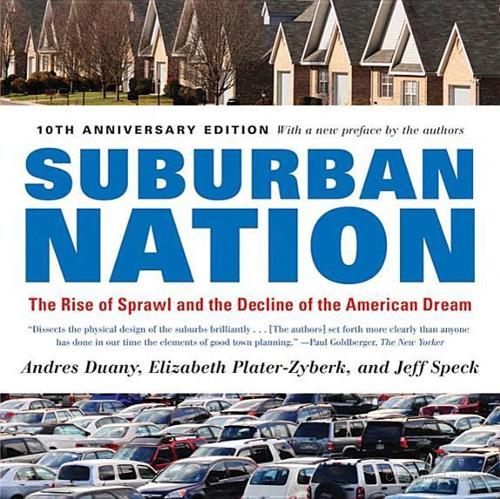
Suburban Nation
by
Andres Duany
,
Elizabeth Plater-Zyberk
and
Jeff Speck
Published 14 Sep 2010
It was conceptualized as a determinant of neighborhood size in the classic 1929 New York City Regional Plan, but it has existed as an informal standard since the earliest cities, from Pompeii to Greenwich Village. If one were to map the neighborhoods of most prewar cities, they would average about one-quarter mile from edge to center. While some flexibility is advisable—the West Coast designer Peter Calthorpe recommends a ten-minute walk in order to engage a larger number of households to a transit stop, and college students seem to put up with twenty minutes, even in icy Wisconsin—most new traditional town plans are designed around the five-minute measure. One-quarter mile is usually the distance from which you can actually spot your destination.
…
These include Peter Katz, Philip Langdon, and James Kunstler, who have been our partners in arms for many years. Mr. Kunstler’s dyspeptic rants never fail to rally his friends in their efforts.dy We must also acknowledge the many idealistic professionals who have joined us in battle, most notably our colleagues in the Congress for the New Urbanism. Our co-founders of the Congress—Peter Calthorpe, Liz Moule, Stef Polyzoides, and Daniel Solomon—have played no small part in the development of the ideas advanced here. Before there was a Congress for the New Urbanism, this book’s principles were nurtured over many years in two extremely supportive environments. One is the University of Miami, where a true school of historically informed architectural practice has developed around the shared objective of building community.
…
., Neeti Madan at Charlotte Sheedy Literary Agency, and our skillful and patient editor, Ethan Nosowsky, at North Point Press/Farrar, Straus and Giroux. NOTES 3. THE HOUSE THAT SPRAWL BUILT 1 From the U.S. Census Bureau’s 1997 report on Geographical Mobility. 2 Edward Blakely and Mary Gail Snyder, Fortress America, 24. 3 Ibid., 7. 4 Peter Calthorpe, The Next American Metropolis, 19. 4. THE PHYSICAL CREATION OF SOCIETY 1 “Parking Lot Pique,” A26. 2 Jonathan Franzen, “First City,” 91. 3 Jonathan Rose, “Violence, Materialism, and Ritual,” 145. 4 Le Corbusier, The City of Tomorrow and Its Planning, 129. 5 Jane Jacobs, The Death and Life of Great American Cities, 129. 5.
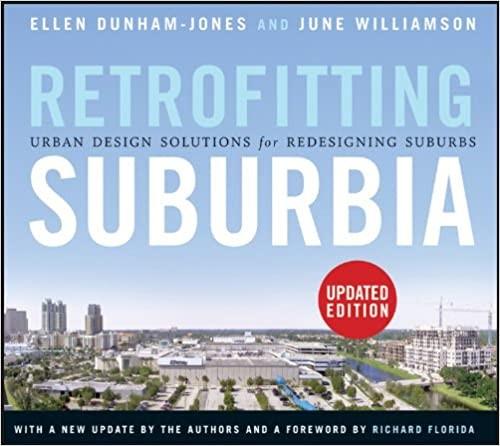
Retrofitting Suburbia, Updated Edition: Urban Design Solutions for Redesigning Suburbs
by
Ellen Dunham-Jones
and
June Williamson
Published 23 Mar 2011
Engineering analysis estimates that despite the dramatic reduction in road width and mix of uses, automobile travel time through the intersections should actually be reduced by 11%.70 Figure 4–20 The high widths and design speeds of contemporary arterial roads make them function as dividers between communities rather than serve the street’s traditional role as a shared public space that seams both sides of the street together. Peter Calthorpe’s design for San Elijo Hills uses a double couplet to narrow arterials into one-way halves that split around the town center, restoring the traditional role of the street to the arterial where it passes through a town. Figure 4–21 Mesa del Sol is an enormous twenty-square-mile mixed-use, high-tech, green community being planned by Peter Calthorpe outside of Albuquerque. It is also where he will test several of the ideas for the Urban Network, including the transit boulevard shown here.
…
We acknowledge the crucial role that the Congress has played in recent decades in forcing the hand of “business as usual” suburban developers, and in empowering designers and planners to believe that the rules of the game can be radically changed. CNU’s seminal publications, Greyfields into Goldfields and Malls into Mainstreets were important precursors to this book. Among those who encouraged and assisted us in telling these stories of transformation are G. B. Arrington, Jackie Benson, Peter Calthorpe, Don Carter, Hank Dittmar, Victor Dover, Andres Duany, Peter Elmlund, Doug Farr, Will Fleissig, Harrison Fraker, Larry Frank, Ray Gindroz, Ellen Greenberg, Seth Harry, Doug Kelbaugh, Liz Moule, Chris Nelson, John Norquist, Elizabeth Plater-Zyberk, Stefanos Polyzoides, Shelley Poticha, Lee Sobel, Dan Solomon, Galina Tachieva, Emily Talen, Tim Van Meter, Laurie Volk, and Todd Zimmerman, We also thank Phyllis Bleiweis and the Seaside Institute for inviting us to opine on suburban retrofitting for professional audiences.
…
The Transit Boulevard and the Urban Network Many planners in recent decades have recognized the disconnection between transportation design and land use and have incorporated efforts at integration into ambitious regional plans. One of the earliest and most effective is the LUTRAQ plan for Portland, Oregon (Land Use Transportation Air Quality), begun in 1988 and led by Peter Calthorpe. His subsequent regional plans for Chicago, Salt Lake City, and Perth have informed his development of the Urban Network, an alternative to the functional street classification system.69 It replaces the current system’s dendritic pattern, which loads every trip onto the arterial, with a more interconnected network.
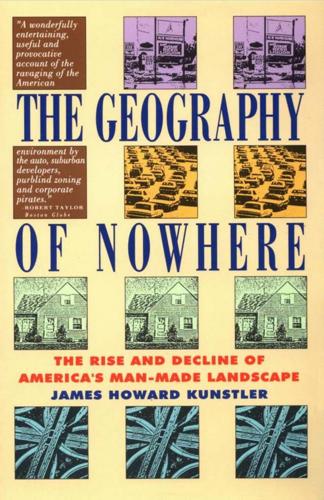
The Geography of Nowhere: The Rise and Decline of America's Man-Made Landscape
by
James Howard Kunstler
Published 31 May 1993
The idea was formally developed at a charrette, or design workshop, held at the University of Washington in the Spring of 1988. The documents were subsequently published under the title, The Pedestrian Pocket Book, edited by Mr. Kelbaugh. Solomon, "Fixing Suburbia," Peter Calthorpe, et aI. , The Pedestrian Pocket Book, p. 29. Peter Calthorpe, "The Post-Suburban Metropolis," Whole Earth Review, Winter 1991. Hiss, The Experience of Place, p. 214. 2 8 0 _ Bibliography Alexander, Christopher. The Timeless Way of Building. New York: Oxford University Press, 1979. Alexander, Christopher; Ishikawa, Sara; Silverstein, Murry; et al.
…
"The fight hasn't been terribly difficult because the world is ready for change. Over the past twenty years, enormous strides have been made in preserving the environment. Where we've failed is in the human ecology. It's this human ecology movement that must really be the agenda for the years ahead. " Pedestrian Pockets ... Peter Calthorpe, the San Francisco architect and planner, is the main figure behind Pedestrian Pockets, a scheme to retool the suburbs. 6 Calthorpe and his colleagues bring a distinctly West Coast point of view to the task. In their part of the country there is very little traditional town fabric dating from before World War II, so good models are few.
…
Our buildings look ridiculous largely because they are built to serve cars, not people, and because they stand in isolation, unconnected with communities of other buildings. To get hung up on building materials without repairing underlying bad rela tionships would result, it seems to me, in just the sort of exercise in nostalgia that Peter Calthorpe was talking about: using old forms with out the supporting principles, hamburger joints dolled up to look like little white churches, in the middle of a parking lot. I aired these doubts with Randall Arendt over lunch in the UMass faculty club. We talked about the town planning ideas being pushed by Duany and others, and how, if implemented, these ideas could go a long way toward saving rural land by putting development where it be longed : in coherent towns with walkable streets, housing for all income groups, and places to shop and work, all mixed together.

Whole Earth Discipline: An Ecopragmatist Manifesto
by
Stewart Brand
Published 15 Mar 2009
Chances are you’ve come across Sausalito waterfront creativity in the writings of Annie Lamott, Alan Watts, Paul Hawken, or Green architect Sim Van Der Ryn; in the cartoons of Shel Silverstein or Phil Frank; in Otis Redding’s “Sittin’ on the Dock of the Bay”; in the Antenna Theater- produced Audio Tours that guide you around the world’s museums and historic sites; in the biological paintings of Isabella Kirkland; and in any town or city reshaped by what is called New Urbanism. That last item is my example. • In 1983, architect Peter Calthorpe gave up on San Francisco, where he had tried and failed to organize neighborhood communities, and moved to a houseboat on the end of South Forty Dock, where I live. He found he was in a place that had the densest housing in California, where no one locked their doors—where most of the doors didn’t even have locks.
…
There’s a whole book on the subject: The World’s Scavengers (2007), by Martin Medina. Lagos, Nigeria, widely considered the world’s most chaotic city, has an Environment Day on the last Saturday of every month. From seven to ten A.M. nobody drives, and the entire city, including the slums, tidies itself up. • In his 1985 article that introduced the idea of walkability, Peter Calthorpe made a statement that still jars most people: “The city is the most environmentally benign form of human settlement. Each city-dweller consumes less land, less energy, less water, and produces less pollution than his counterpart in settlements of lower densities.” “Green Manhattan” was the inflammatory title of a 2004 New Yorker article by David Owen.
…
Some environmentalists already are proponents of urban compactness. Sierra Club’s magazine reports that in Vancouver, “Mayor Sam Sullivan’s EcoDensity program includes zoning changes to allow ‘secondary suites,’ or in-law apartments; triplexes; and narrow streets with houses that abut property lines.” Peter Calthorpe’s “walkability” has become a real estate selling point, with walkable neighborhoods able to charge premium prices. A proven way to encourage walking and use of public transit is with a “congestion tax” on cars in the downtown streets. In 2002 London followed the lead of Singapore and Hong Kong and adopted the practice of charging cars £8 a day to drive in the central city.

Aerotropolis
by
John D. Kasarda
and
Greg Lindsay
Published 2 Jan 2009
While it was on its deathbed, the Stapleton Foundation issued the “Green Book,” an open call for someone willing to step up and build “compact, mixed-use communities that are walkable and transit-oriented,” communities with as many jobs as residents and a thousand acres set aside for parks. The foundation held a bake-off in 1998 to select a master developer, spurning the highest of four bidders in favor of Forest City Enterprises, which pledged a twenty-year marriage to the project and paid its dowry up front to prove it. In turn, it drafted Peter Calthorpe, a founding father of New Urbanism, to help patch the battered and polluted site back into the urban fabric. Following his movement’s scripture, Calthorpe’s plan dutifully broke down the site into zones, or “transects,” of various densities. Neighbor-hoods and schools comprised the south side of the airfield, where Brian Tellinghuisen lived, while parks of both the green and office variety would vie for the center.
…
We got to talking about what made this place tick and, by extension, how one would go about building it anew someplace else. It was something he’d thought about before briefing visting members of Parliament on how they might go about rehabbing Heathrow. “ ‘New Urbanism’ is a funny term, because it’s really the old urbanism,” he said. “Peter [Calthorpe] would tell you you can have New Urbanism anywhere.” And so would Gleason’s boss, Jon Ratner. The youngest member of the Ratner clan is arguably its most radical. Having started work at Stapleton in his twenties, he’d since risen to the post of director of sustainability, in charge of the firm’s triple bottom line: “people, planet, and profit.”
…
I think we’ll see New Urbanist communities in places like China and India on a scale that will blow away anything we’ve seen.” They’ll have to top an even bigger bet his family placed in another mountain mega, twenty square miles of desert named Mesa del Sol. Lying on the south side of Albuquerque atop a mammoth plateau, it’s the last parcel of its size in America so close to the airport and downtown. Peter Calthorpe drafted a sequel to Stapleton, with a few twists thrown in. For one, it’s three times the size of the original, adding a hundred thousand residents to a city of less than a million. Another is on-site employers any mayor (or governor) would kill for, including a film studio and a maker of solar cells that opened a $100 million factory there last year.

The New Class Conflict
by
Joel Kotkin
Published 31 Aug 2014
“Even mild to moderate deviations in either price or supply will crush our economy and make the logistics of daily life impossible.”79 Small wonder that he and other environmentalists view suburbs as “the greatest misallocation of resources in the history of the world,” one that, fortunately, “has now entered a state of terminal decline.”80 In what resembles a kind of religious certainty, much of the Clerisy, particularly among architects and planners, has divined a direct relationship between climate change and U.S. housing patterns. “What is causing global warming is the lifestyle of the American middle class,” says new urbanist architect Andrés Duany, a major developer of dense housing himself.81 Densification, claims influential architect Peter Calthorpe, is no less than “a climate change antibiotic.”82 Yet these statements ignore the fact that American carbon emissions are falling and that much of the world’s increase is occurring in densely packed places like India and China.83 To be sure, we should work to control emissions here in the United States.
…
Irvin Dawid, “New Urbanism Examined by Time Magazine, Andrés Duany,” Planetizen, December 24, 2007, http://www.planetizen.com/node/29063; Brian Stone, “Land Use as Climate Change Mitigation,” Environmental Science and Technology, November 12, 2009; Ronald D. Utt, “The Oberstar Transportation Plan: A Costly Exercise in Lifestyle Modification,” Heritage Foundation Web Memo, November 10, 2009. 82. Peter Calthorpe, “Urbanism in the Age of Climate Change: Urbanism Expanded,” StreetsBlogSF, February 1, 2011, http://sf.streetsblog.org/2011/02/01/urbanism-in-the-age-of-climate-change-urbanism-expanded. 83. Lindsay Wilson, America’s Carbon Cliff: Dissecting the Decline in U.S. Carbon Emissions,” report, Shrink That Footprint, March 2013, http://shrinkthatfootprint.com/wp-content/uploads/2013/03/Americas-Carbon-Cliff.pdf. 84.
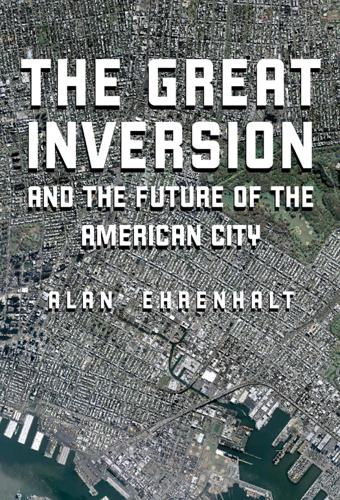
The Great Inversion and the Future of the American City
by
Alan Ehrenhalt
Published 23 Apr 2012
The houses spread out over most of its 4,700 acres, a blend of Victorian and Craftsman, Colonial, and Mediterranean revival. All of them are on small lots, none larger than a quarter acre. The fact that Stapleton was built this way, rather than as one more cookie-cutter suburban subdivision, is a tribute of sorts to the city of Denver, circa 1995; its master planner, Peter Calthorpe; and its developers, Forest City Enterprises. Moreover, it has generally been a success. Prior to the recession, its 3,600 occupied units were increasing in value at a rate of roughly 10 percent a year. There are ten thousand residents of Stapleton now, out of a projected population of thirty thousand people two decades from now, a fair proportion of them empty nesters but a startling number of families.
…
Many public officials and planning professionals were first introduced to the principles of New Urbanism through the vehicle of lectures and slide shows documenting the ugliness of suburban sprawl and the intelligence of urban design as practiced in many places in the preautomobile era. Andres Duany, Elizabeth Plater-Zyberk, Peter Calthorpe, and a handful of coconspirators carried these slides to countless audiences all over the country in the early and mid-1990s. As a model of their intentions, they offered Seaside, the residential community in north Florida that was designed by Duany and Plater-Zyberk in the 1980s, complete with sidewalks, front porches, a town square, and a whole array of other reminders of the old-fashioned, pedestrian-friendly American small town.
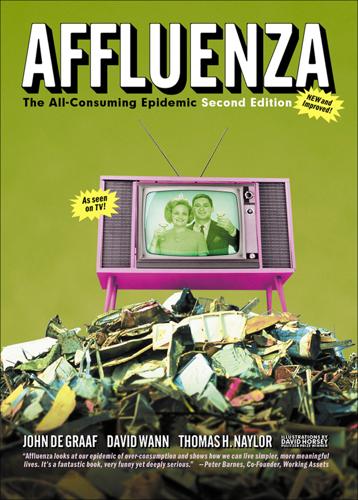
Affluenza: The All-Consuming Epidemic
by
John de Graaf
,
David Wann
,
Thomas H Naylor
and
David Horsey
Published 1 Jan 2001
We “cocoon,” retreating further and further inward and closing the gate behind us. Including secured apartment dwellers, residents of gated communities, prison inmates, and residential security system zealots, at least a fifth of the country now lives behind bars. “Socially, the house fortress represents a self-fulfilling prophecy,” says community designer Peter Calthorpe. “The more isolated people become and the less they share with others unlike themselves, the more they do have to fear.”16 Sociologist Edward Blakely would agree. “We are a society whose purported goal is to bring people of all income levels and races together, but gated communities are the direct opposite of that,” he writes in the book Fortress America.
…
Irish Independent, September 26, 2003, as quoted in Richard Freeman and Arthur Ticknor, “Wal-Mart Is Not a Business, It’s an Economic Disease,” Executive Intelligence Review, November 14, 2003. 13. Stacy Mitchell, Institute for Local Self-Reliance, in discussion with David Wann, February 2000. 14. Jeff Milchen, Boulder Independent Business Alliance, in discussion with David Wann, February 2000. 15. Al Norman in discussion with David Wann, February 2000. 16. Peter Calthorpe in discussion with David Wann, October 1998. 17. Edward J. Blakely and Mary Gail Snyder, Fortress America: Gated Communities in the United States (Washington, D.C.: Brookings Institution Press, 1997). 18. Dyan Machan, in an interview with Daniel Yankelovich, Forbes, November 16, 1998, 194. 19.Putnam, Bowling Alone. 20.
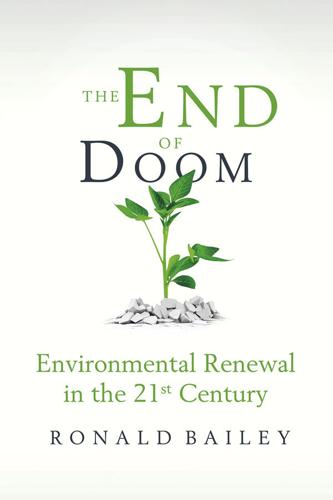
The End of Doom: Environmental Renewal in the Twenty-First Century
by
Ronald Bailey
Published 20 Jul 2015
As a result, the researchers conclude that while the need for action is urgent, there is still time to rescue and restore the biodiversity of the oceans. Cities Spare Nature Another extremely positive megatrend with regard to protecting and restoring nature is urbanization. In his 2010 article “How Slums Can Save the Planet,” prominent environmental thinker Stewart Brand cited architect Peter Calthorpe’s 1985 assertion that “[t]he city is the most environmentally benign form of human settlement. Each city dweller consumes less land, less energy, less water, and produces less pollution than his counterpart in settlements of lower densities.” By 2010, the majority of people lived in cities for the first time in history.
…
“halts, and even reverses”: Christopher Costello, Steven D. Gaines, and John Lynham, “Can Catch Shares Prevent Fisheries Collapse?” Science 321.5896 (September 19, 2008): 1678–1681. www.sciencemag.org/content/321/5896/1678.short . “The city is the most environmentally benign form”: Stewart Brand, citing Peter Calthorpe in “How Slums Can Save the Planet.” Prospect, January 27, 2010. www.prospectmagazine.co.uk/magazine/how-slums-can-save-the-planet/#.U7sUp6goxyg. a globally interconnected world: Paolo D’Odorico et al., “Feeding Humanity Through Global Food Trade.” Earth’s Future 2.9 (September 2014): 458–469. onlinelibrary.wiley.com/doi/10.1002/2014EF000250/abstract.
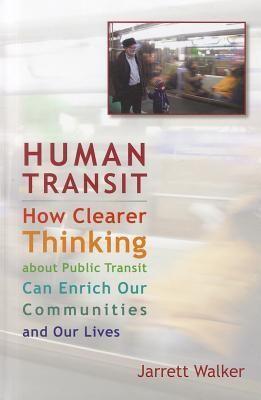
Human Transit: How Clearer Thinking About Public Transit Can Enrich Our Communities and Our Lives
by
Jarrett Walker
Published 22 Dec 2011
In that case, the best transit outcome may be to build low-density, car-based development on such a site, so that the market for transit-friendly denser housing can be encouraged to locate in more transit-friendly places. That’s the case with one of the most famous early efforts at “Transit-Oriented Development” (TOD). Designed in the late 1980s by Peter Calthorpe, Laguna West, south of Sacramento, featured the now-familiar neo-traditional ideals for new suburbs. A gridded town center would consist of offices or housing over retail on pleasant, walkable streets, all surrounding a station for attractive rapid transit. Extending outward, densities would gradually fall, allowing for the large area of single-family homes that the market demanded while ensuring the greatest possible concentration of activity close to the transit stop (figure 14-5a).
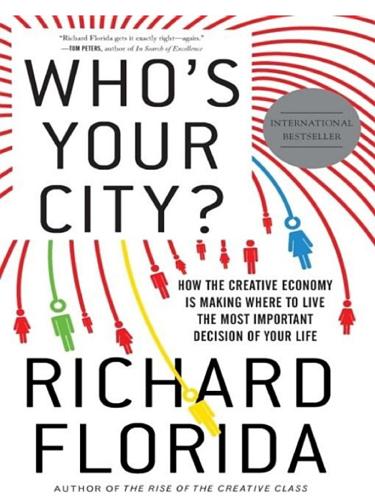
Who's Your City?: How the Creative Economy Is Making Where to Live the Most Important Decision of Your Life
by
Richard Florida
Published 28 Jun 2009
How to reduce the reliance on cars as the way of getting around? How to increase density? How to make them more pedestrian friendly and accessible by mass transit? How to transform them from subdivisions amid shopping malls to integrated live-work-learn-play communities? Newburbia is another option. The brainchild of architects like Andres Duany and Peter Calthorpe, newburbia is a designed community with a traditional feel.7 The houses are clustered tightly together but surrounded by lots of green space. These places are typically oriented to pedestrian traffic (they restrict the use of cars) and shaped around town centers. One of the most famous examples is Celebration, Florida, on the outskirts of Disney World.
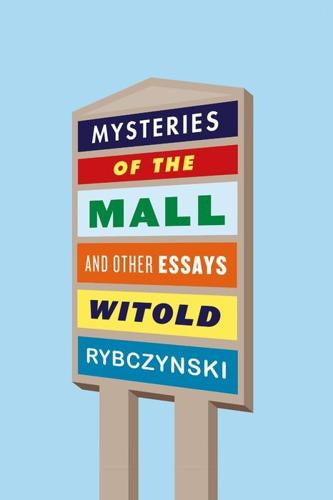
Mysteries of the Mall: And Other Essays
by
Witold Rybczynski
Published 7 Sep 2015
New Urbanism represents a turning away from the principles that have characterized American urban design since the 1950s and a rediscovery of the virtues of traditional, gridded streets scaled to the pedestrian and of cities that integrate a diversity of urban uses—commercial and industrial as well as residential—rather than being zoned according to single functions. So far, the accomplishments of architects and planners like Peter Calthorpe, Daniel Solomon, and Andrés Duany and Elizabeth Plater-Zyberk have been predominantly suburban and aimed at an upper-middle-class clientele, but the commercial successes of New Urbanism are evidence of its broad appeal to consumers and developers alike. It seems appropriate that such a mainstream, pragmatic approach should be applied to the remedial design of public housing.
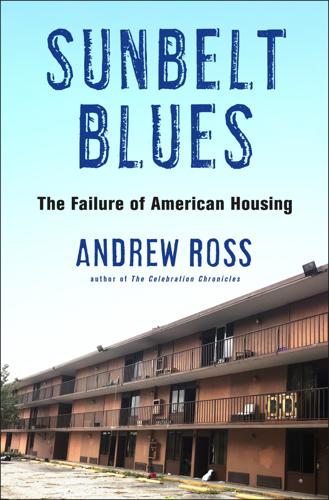
Sunbelt Blues: The Failure of American Housing
by
Andrew Ross
Published 25 Oct 2021
See Feargus O’Sullivan, “Lisbon Has a Plan to Reclaim Housing from Airbnb,” Bloomberg CityLab, July 8, 2020, https://www.bloomberg.com/news/articles/2020-07-08/lisbon-s-plan-to-reclaim-vacation-rentals-for-housing. 32. Matthew Desmond, “The Tenants Who Evicted Their Landlord,” New York Times, October 13, 2020, https://www.nytimes.com/2020/10/13/magazine/rental-housing-crisis-minneapolis.html. 33. Peter Calthorpe and Joe DiStefano, “Revolutionizing Transit and Solving the Silicon Valley Housing Crisis,” Urban Footprint, August 17, 2018, https://urbanfootprint.com/revolutionizing-transit-while-solving-the-housing-crisis/. 34. Harry Truman, “Special Message to the Congress upon Signing the Housing and Rent Act,” June 30, 1947, Harry S.

Ghost Road: Beyond the Driverless Car
by
Anthony M. Townsend
Published 15 Jun 2020
An improvement over its low-density predecessor (bottom half), microsprawl (upper half) is defined by large tracts of higher-density housing accessed by personal rovers and software-train mass transit. DASH MARSHALL. At first glance, automation looks like a force multiplier for transit-oriented development. Prominent urban planners like Peter Calthorpe, a founder of the Congress for the New Urbanism, have embraced the synergy of software trains and compact neighborhoods. It’s easy to imagine driverless shuttles playing a role in linking satellite neighborhoods designed without cars in mind—boasting more footpaths and less parking, for instance.
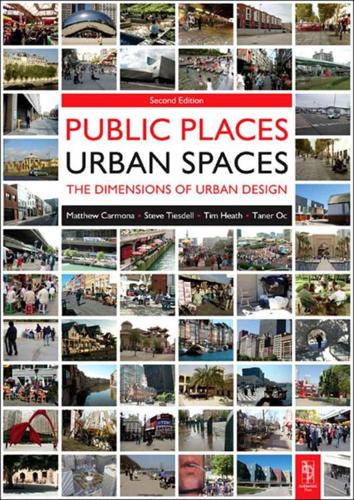
Public Places, Urban Spaces: The Dimensions of Urban Design
by
Matthew Carmona
,
Tim Heath
,
Steve Tiesdell
and
Taner Oc
Published 15 Feb 2010
Almost everywhere, often within very different professional structures, progress has been made in establishing the activities of urban design and place-making. During this period, the notion of urban design as a formal profession has nonetheless been a consistent theme. Observing the absence of a formal profession of urban designers in the United States, for example, Peter Calthorpe (in Fishman 2005: 68) argued:‘There is a profession and license for landscape design, for planners, for civil engineers, for structural engineers, for traffic engineers but not for the most important profession, urban design. There is a huge void there … There is a profession waiting to be born … Sometimes people slip out of architecture and become urban designers, but that’s pretty rare because they are so fascinated with the building.
…
On either side of these – buffered by a median strip with poplar trees and more shrubs – are local lanes for neighbourhood traffic, with homes and businesses fronting directly onto them. Another freeway-removal project in the city involved rebuilding earthquake-damaged Embarcadero Freeway as a much more accessible tree-lined boulevard involving light rail and pedestrian and cycle space, with a new public space in front of the Ferry Building at the foot of Market Street. Peter Calthorpe has also explored the use of multi-lane thoroughfares in new developments (see Dunham-Jones & Williamson 2009). In the UK, Birmingham, the first city to complete a 50-mile per hour ring and radial motorway system, was also among the first to dismantle its flyovers and underpasses, to replace free-flow intersections with light-controlled crossroads and to reinstate pedestrian flows at street level (Hebbert 2005: 49) (Figure 4.34a and b).

The Human City: Urbanism for the Rest of Us
by
Joel Kotkin
Published 11 Apr 2016
Author James Howard Kunstler boldly predicted that high energy costs would make “the logistics of daily life impossible” in the suburbs.160 Yet the prospect of an energy-driven suburban collapse has become increasingly unlikely, in large part due to recent advances in US oil and gas production that have driven prices down.161 Unable to wait for energy shortages to do their work, retro-urbanists increasingly base their opposition to suburbs on concerns over climate change instead.162 Densification, claims influential architect Peter Calthorpe, is no less than “a climate change antibiotic.”163 This strong linkage of suburbs to climate change proves somewhat extravagant and perhaps more than a little self-serving. In reality, carbon emissions in low-density America are falling, largely due to the use of natural gas over coal, while much of the world’s increases in carbon emissions are occurring in densely packed places like India, China, and even supposedly ultra-green Europe.164 Cramming, notes a recent National Academy of Sciences report, can do relatively little to reduce US greenhouse gas emissions—perhaps as little as reducing them by only 2 percent.165 Implementing less intrusive policies such as those requiring better mileage on cars—including electric-, natural gas-, or hydrogen-propelled cars—would be far more impactful, not to mention practical.166 These steps, suggests a report from McKinsey & Company and The Conference Board, could ensure significantly reduced greenhouse gas emissions without any “downsizing of vehicles, homes or commercial space” and without any changes in the number of miles traveled.
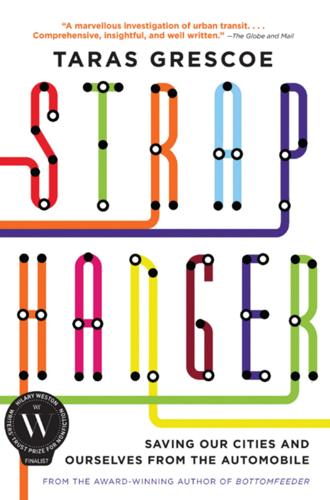
Straphanger
by
Taras Grescoe
Published 8 Sep 2011
No Vacancy There is something fatally dingy about the catchphrase “transit-oriented development” (TOD). For too many people, the whole notion of living in close proximity to transit carries the stink of cabbage-scented tenements in the overcrowded slums of some nineteenth-century industrial city. The term, poputartzed by architect and urban planner Peter Calthorpe, describes relatively high-density neighborhoods with a mix of residences and businesses, often with an emphasis on multistory and multifamily dwellings. In theory, a transit-oriented dwelling is located within half a mile of a light-rail platform, a subway station, or a high-frequency bus line.
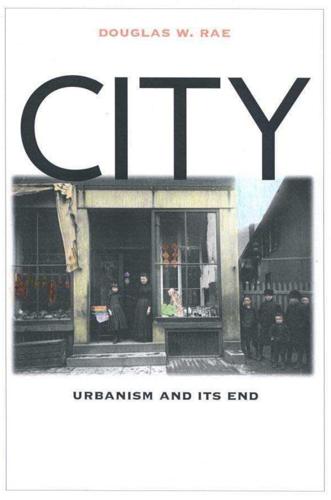
City: Urbanism and Its End
by
Douglas W. Rae
Published 15 Jan 2003
“History of Orange: Sesquicentennial, 1822–1972” (Orange, Conn.: Town of Orange, 1972). 28. Trolley service was close to hand. 29. The book’s website, www.endofurbanism.com, contains an inventory of over eight hundred suburban developments in the towns around New Haven from 1872 to 2001. 30. Dana, New Haven’s Problems. 31. Ibid., 17–18. 32. Peter Calthorpe, The New American Metropolis (New York: Princeton Architectural Press, 1986). Andres Duany, Elizabeth Plater-Zyberk, and Jeff Speck, Suburban Nation (New York: Farrar, Straus, Giroux, 2000); Thomas Hylton, Save Our Land, Save Our Towns (Harrisburg, Pa.: Seitz and Seitz, 1995); Katz, New Urbanism; Philip Langdon, A Better Place to Live (Amherst: University of Massachusetts Press, 1994). 33.